 Two of the biggest publishing companies, Pearson of the UK and Bertelsmann of Germany are to form a joint venture by merging their Penguin and Random House imprints. Bertelsmann will have a majority stake in the venture of 53% and Pearson will have 47%.
Two of the biggest publishing companies, Pearson of the UK and Bertelsmann of Germany are to form a joint venture by merging their Penguin and Random House imprints. Bertelsmann will have a majority stake in the venture of 53% and Pearson will have 47%.
The Penguin imprint, with a turnover of just over £1bn, has an 11% share of the English language book publishing market. Random House has a 15% share, with turnover of around £1.5bn. The new ‘Penguin Random House’, as it will be called, will have nearly 26% of the market, which should give it considerable market power to combat various threats in the book publishing market.
One threat is from online retailers, such as Amazon, Apple and Google, which use their countervailing power to drive down the prices they pay to publishers. Another threat is from the rise of electronic versions of books. Although e-books save on printing costs, competition is driving down prices, including the prices of paper books, which may make publishers more reluctant to publish new titles in paper form.
There has been a mixed reception from authors: some are worried that an effective reduction in the number of major publishers from six to five will make it harder to get books published and may squeeze royalty rates; others feel that an increased market power of publishers to take on the online retailers will help to protect the interests of authors
The following videos and articles look at the nature of this joint venture and its implications for costs, revenues and publishing more generally.
Videos and webcasts
 Penguin and Random House merge to take on digital giants Channel 4 News, Matthew Cain (29/10/12)
Penguin and Random House merge to take on digital giants Channel 4 News, Matthew Cain (29/10/12)
 Penguin and Random House confident merger will be approved BBC News, Will Gompertz (29/10/12)
Penguin and Random House confident merger will be approved BBC News, Will Gompertz (29/10/12)
 Penguin Books and Random House to merge BBC News, Matt Cowan (29/10/12)
Penguin Books and Random House to merge BBC News, Matt Cowan (29/10/12)
Articles
Random House and Penguin merge to take on Amazon, Apple Reuters, Kate Holton (29/10/12)
Pearson’s Penguin joins Random House Independent, Amy Thomson and Joseph de Weck (29/10/12)
Penguin and Random House sign merger deal Financial Times, Gerrit Wiesmann and Robert Budden (29/10/12)
March of the Penguin The Economist, Schumpeter blog (29/10/12)
Penguin chief: News Corp can’t derail Random House deal The Guardian, Mark Sweney (29/10/12)
Penguin and Random House confident merger will be approved BBC News, Anthony Reuben (29/10/12)
And so I bid Penguin a sad farewell Independent, Andrew Franklin (29/10/12)
Questions
- How does a joint venture differ from a merger?
- What types of economies of scale are likely to result from the joint venture?
- How are authors likely to be affected?
- Will the joint venture benefit the book reading public?
- The relationship between publishers and online retailers can be described as one of ‘bilateral oligopoly’. Explain what this means and why it is impossible to determine an ‘equilibrium’ wholesale price of books in such a market.
- What criteria would the competition authorities use to assess whether or not the joint venture should be permitted to proceed?
- What is likely to be the long-term outlook for Penguin Random House?
- Assess the benefits and costs of a News Corporation takeover of the Penguin division? This was an alternative offer to Pearson had it not gone with Bertelsmann. (News Corp. has the Harper Collins imprint.)
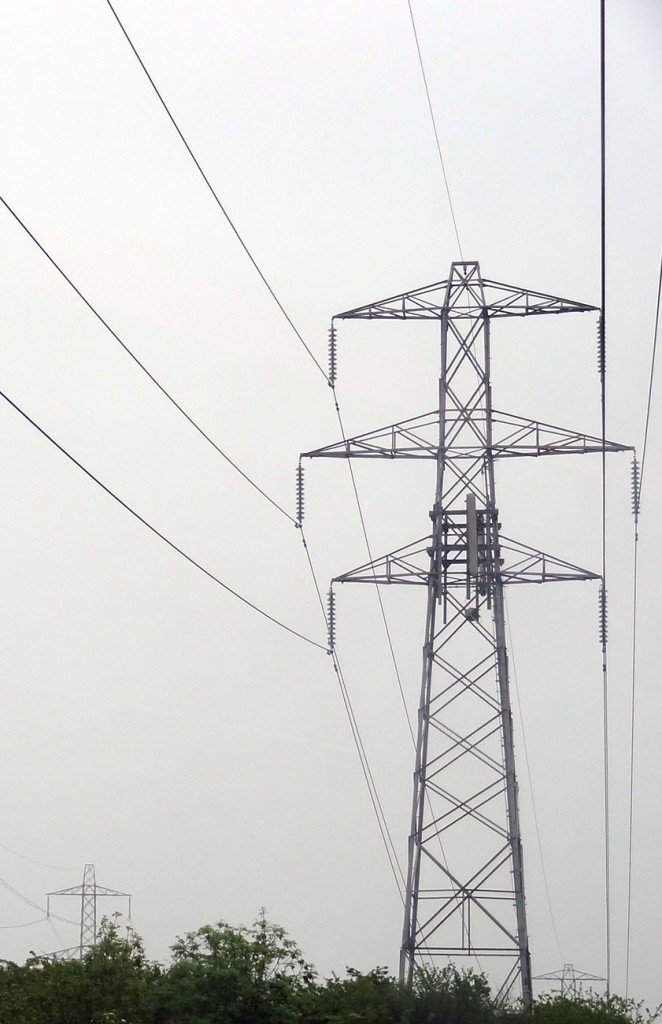 The energy sector has a history of criticism with regards to prices and practices. In the past, Ofgem have tried to make the sector more competitive, by ensuring that price comparisons are easier. At the beginning of this year, many of the big six providers announced price cuts, but within the next few weeks, we will see the reverse occurring, as energy prices begin to rise.
The energy sector has a history of criticism with regards to prices and practices. In the past, Ofgem have tried to make the sector more competitive, by ensuring that price comparisons are easier. At the beginning of this year, many of the big six providers announced price cuts, but within the next few weeks, we will see the reverse occurring, as energy prices begin to rise.
British Gas has announced price rises of 6% from 16th November that will affect over 8 million customers by adding approximately £80 per year to the annual dual fuel bill. Npower will also put its prices up 10 days later (8.8% for gas and 9.1% for electricity), creating higher bills for 3 million people.
In January of this year, when we saw energy prices fall, it was not solely due to Ofgem’s findings. We had a relatively mild winter, which reduced the demand for energy and this fed into lower prices. As the winter now approaches once more, demand for energy will begin to increase, feeding into prices that are now higher.
Furthermore, the energy companies have said that a range of external factors are also adding to their costs and putting increasing pressure on them to increase their charges. Npower’s Chief Commercial Officer said:
“There is never a good time to increase energy bills, particularly when so many people are working hard to make ends meet…But the costs of new statutory schemes, increases in distribution charges and the price of gas for the coming winter are all being driven up by external factors, for example government policy”
 Significant investment is needed in the energy sector. Energy companies are required to set aside money for maintaining and improving the national grid and investing in renewable energy, such as wind and solar power. In order for the energy companies to fund these investments, more money must be raised and the logical method is to put up prices. However, critics are simply blaming ‘these very big lazy companies’ who are passing ‘above-inflation price rises’ onto already squeezed households.
Significant investment is needed in the energy sector. Energy companies are required to set aside money for maintaining and improving the national grid and investing in renewable energy, such as wind and solar power. In order for the energy companies to fund these investments, more money must be raised and the logical method is to put up prices. However, critics are simply blaming ‘these very big lazy companies’ who are passing ‘above-inflation price rises’ onto already squeezed households.
Part of this is undoubtedly to do with the market structure of this sector. A typical oligopoly creates a market which, under certain circumstances, can be highly competitive, but because of barriers to entry that prevent new firms from entering the market may charge higher prices and be inefficient. Indeed, Ofgem has plans to reduce the power of the main energy providers by forcing them to auction off some of the electricity they generate. The aim of this is to free up the market and make it more competitive.
While only three providers have announced price rises, it is inevitable that the other three will follow. The relative increases will create incentives for consumers to switch providers, but crucial to this is an ability to understand the different tariffs on offer and lack of clarity on this has been a big criticism previously levelled at the energy sector. Indeed, half of UK customers have never switched energy providers. Perhaps this is the time to think about it, firstly as a means of saving money and secondly as a means of putting the energy companies in competition with each other. The following articles consider this market.
Energy price rises: how to switch, save and safeguard your supply The Guardian, Mark King (12/10/12)
 Npower and British Gas raise energy prices (including video) BBC News (12/10/12)
Npower and British Gas raise energy prices (including video) BBC News (12/10/12)
Energy price rises? We’re like turkeys voting for Christmas The Telegraph, Rosie Murray-West (12/10/12)
British Gas and Npower to raise prices fuelling fears of a ‘long, cold winter’ for more households Independent
, Graeme Evans (12/10/12)Wholesale prices rise as energy costs jump Wall Street Journal, Sarah Portlock and Jeffrey Sparshott (12/10/12)
British Gas raises gas and electricity prices by 6pc The Telegraph (12/10/12)
Osborne warns energy firms over price hikes Reuters (12/10/12)
Energy price hikes to take effect from next week Independent, Simon Read(13/10/12)
Questions
- What are the main reasons influencing the recent price rises? In each case, explain whether it is a demand- or supply-side factor.
- Using your answer from question 1, illustrate the effect of it on a demand and supply diagram.
- Which features of an oligopolistic market are relevant to the energy sector. How can we use them to explain these higher prices.
- How has government policy affected the energy sector and energy prices?
- Why are customers reluctant to change energy providers? Does this further the energy company’s ability to raise prices?
- Are there any government policies that could be implemented to reduce the power of the energy companies?
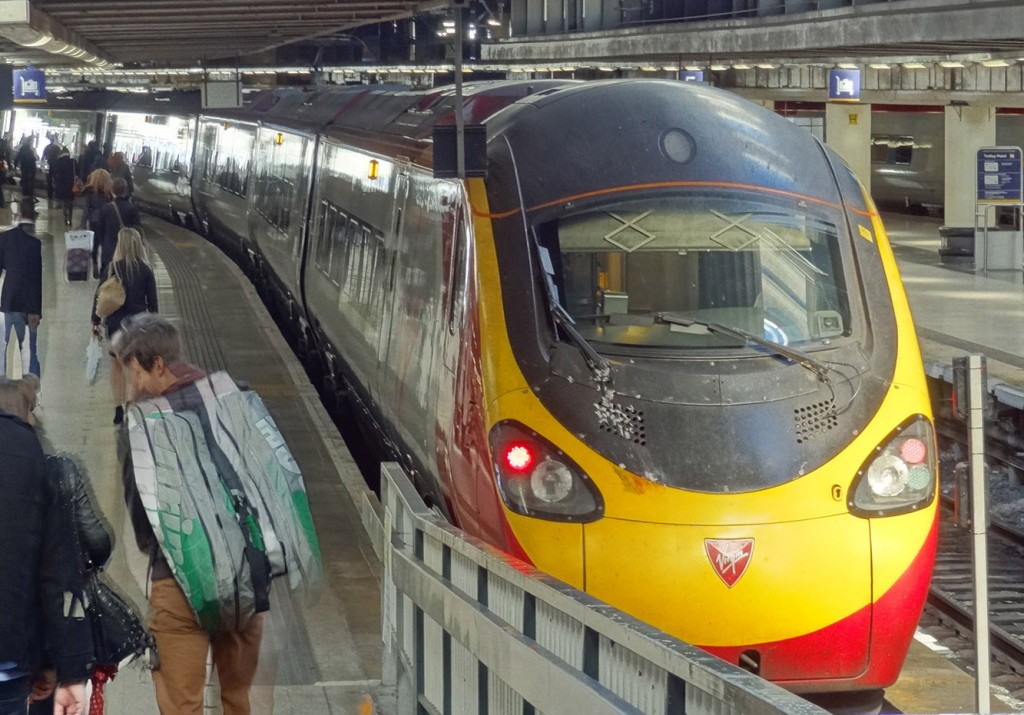 Virgin’s franchise to run the West Coast Main Line from London to Birmingham, Manchester, Liverpool, Glasgow and Edinburgh was due to expire in December. The Department of Transport thus invited tenders to run a new 13-year franchise, worth around £5 billion, and on 15 August announced that the franchise had been awarded to FirstGroup. It had bid substantially more than Virgin.
Virgin’s franchise to run the West Coast Main Line from London to Birmingham, Manchester, Liverpool, Glasgow and Edinburgh was due to expire in December. The Department of Transport thus invited tenders to run a new 13-year franchise, worth around £5 billion, and on 15 August announced that the franchise had been awarded to FirstGroup. It had bid substantially more than Virgin.
Virgin immediately challenged the decision, arguing that FirstGroup’s figures were flawed. According to the second BBC article below:
It argued that FirstGroup’s revenue projections were wildly optimistic – that passenger growth of 6% a year was unlikely given that Virgin had seen growth of 5% a year from a much lower base. This level of passenger growth would have seen FirstGroup’s revenue from the franchise grow by more than 10% a year, which was simply unrealistic, Virgin argued.
And it is not alone. “Everybody in the industry thought that this bid was not sustainable and that the risks had not been taken into account by the Department for Transport,” says rail industry expert Christian Wolmar.
If revenue targets are not met, the franchisee doesn’t have the money to pay the government the promised fee for the contract, which in FirstGroup’s case was back-loaded towards the end of the 13-year term.
After making its decision, the Transport Secretary at the time, Justine Greening, said that the process of assessing the bid was robust and fair and conducted with due diligence. Sir Richard Branson of Virgin strongly and publicly disagreed and Virgin decided to take the Department of Transport to court. The court case was scheduled to begin on 4 October.
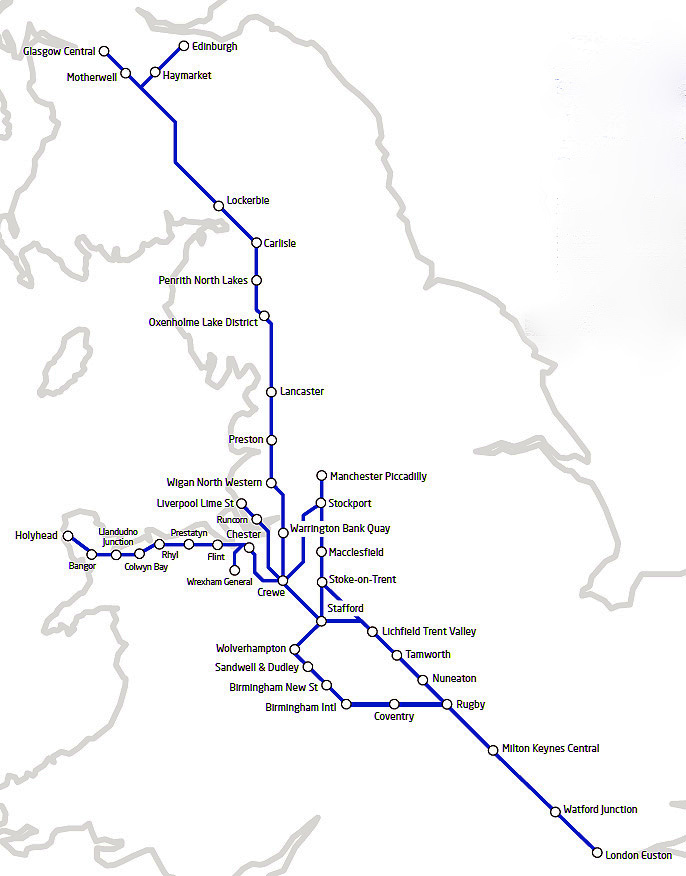 However, in preparing its case to put to the court, the Department of Transport uncovered significant errors in the evaluation of the bids. These errors involved the overestimation of passenger numbers, the undervaluation of risk and a failure to take inflation into account. The errors stemmed from inputting the data incorrectly.
However, in preparing its case to put to the court, the Department of Transport uncovered significant errors in the evaluation of the bids. These errors involved the overestimation of passenger numbers, the undervaluation of risk and a failure to take inflation into account. The errors stemmed from inputting the data incorrectly.
The errors were so serious that the new Transport Secretary, Patrick McLoughlin, on the day before the court case was due to begin, announced that he was scrapping the contract to FirstGroup and would invite new bids. All four of the original bidders would have their costs refunded, amounting to some £40 million.
 The minister also announced that he was setting up two reviews. One would seek to establish just what went wrong in the assessment of the West Coat Main Line bids and what lessons could be learned. This is due to report at the end of October. The other review would examine the wider rail franchise programme and how bids are appraised. In the meantime, three other franchise competitions had been ‘paused’ pending the results of this second review, due to report in December.
The minister also announced that he was setting up two reviews. One would seek to establish just what went wrong in the assessment of the West Coat Main Line bids and what lessons could be learned. This is due to report at the end of October. The other review would examine the wider rail franchise programme and how bids are appraised. In the meantime, three other franchise competitions had been ‘paused’ pending the results of this second review, due to report in December.
The articles look at the problems of assessing bids and properly taking into account risks associated with both revenue and cost projections. Not surprisingly, they also look at the politics of this amazing and unprecedented U-turn
Webcasts and podcasts
 West Coast Main Line rail franchise deal scrapped BBC News, Richard Westcott (3/10/12)
West Coast Main Line rail franchise deal scrapped BBC News, Richard Westcott (3/10/12)
 West coast rail franchise deal scrapped Channel 4 News, Krishnan Guru-Murthy (3/10/12)
West coast rail franchise deal scrapped Channel 4 News, Krishnan Guru-Murthy (3/10/12)
 ‘Major problem’ for West Coast Main Line BBC Today Programme, Louise Ellman (3/10/12)
‘Major problem’ for West Coast Main Line BBC Today Programme, Louise Ellman (3/10/12)
 Philip Hammond on West Coast Main Line contract BBC News, Andrew Neil (7/10/12)
Philip Hammond on West Coast Main Line contract BBC News, Andrew Neil (7/10/12)
 Virgin to run West Coast route ‘for at least nine months’ BBC News, Richard Westcott (15/10/12)
Virgin to run West Coast route ‘for at least nine months’ BBC News, Richard Westcott (15/10/12)
Articles
British transport secretary cancels West Coast franchise International Railway Journal, David Briginshaw (3/10/12)
Wrong track: Another humiliation for the government The Economist (5/10/12)
West Coast Main Line: total chaos as government scraps franchise deal The Telegraph, Alistair Osborne (3/10/12)
West Coast Main Line deal scrapped after contract flaws discovered BBC News (3/10/12)
Q&A: West Coast Main Line franchise BBC News (4/10/12)
What derailed the Transport Department BBC News, Robert Peston (3/10/12)
Transport official suspended over rail fiasco is ex-Goldman banker Independent, Oliver Wright and Cahal Milmo (5/10/12)
West Coast Main Line: Civil servant Kate Mingay speaks out BBC News (6/10/12)
Civil servant: I wasn’t to blame over West Coast bid The Telegraph, Louise Armitstead (5/10/12)
West coast rail fiasco: three government officials suspended Guardian, Gwyn Topham (3/10/12)
What does west coast shambles mean for big rail franchises? Guardian, Dan Milmo (3/10/12)
West coast mainline fiasco may claim further victims Guardian, Gwyn Topham and Dan Milmo (4/10/12)
The West Coast mainline, wasted taxes, and a secretive shambles at the heart of the Civil Service Independent, Steve Richards (4/10/12)
Why all the West Coast bids were wrong BBC News, Robert Peston (9/10/12)
Questions
- What were reasons for awarding the contract to FirstGroup back in August?
- How is discounting used to assess the value of projected future revenue and costs? How does the choice of the rate of discount impact on these calculations?
- In what way should risk be taken into account?
- Why was the FirstGroup bid particularly sensitive to the calculation of risk?
- If both costs and revenues go up with inflation, how is inflation relevant to the calculation of the profitability of a bid?
- What are the arguments for and against making franchises longer?
- Is it only at the bidding stage that there is any competition for train operators? Explain.
- Should full social costs and benefits be taken into account when assessing bids for a rail franchise? Explain.
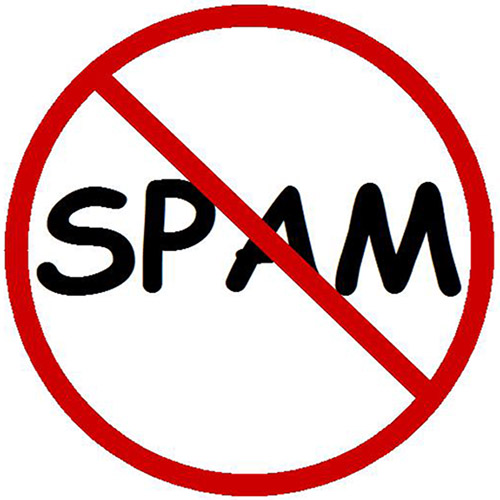 A modern day hindrance is spam email clogging up your inbox with, for example, offers for cheap drugs or notifications that you will inherit enough money to retire to the Bahamas. A recent paper by Justin Rao and David Reiley in the Journal of Economic Perspectives investigates the economics of spam mail (which, as I discovered, from the article gets it’s name from a Monty Python sketch). Remarkably, they quote figures suggesting that 88% of worldwide email traffic is spam. Their paper then provides a number of interesting insights into the business of spam mail.
A modern day hindrance is spam email clogging up your inbox with, for example, offers for cheap drugs or notifications that you will inherit enough money to retire to the Bahamas. A recent paper by Justin Rao and David Reiley in the Journal of Economic Perspectives investigates the economics of spam mail (which, as I discovered, from the article gets it’s name from a Monty Python sketch). Remarkably, they quote figures suggesting that 88% of worldwide email traffic is spam. Their paper then provides a number of interesting insights into the business of spam mail.
First, given that most recipients simply delete it, why is spam mail sent out? For the benefits of sending it to exceed the costs, it must be that somebody is reading and responding to it and the costs must also be reasonably low. Rao and Reiley are able to quantify these costs and benefits. They estimate that if 8.3 million spam emails are sent, only 1.8% (approximately 150,000) will reach the intended recipients’ inboxes, with the remainder being blocked or filtered out. Of these 150,000, just 0.25% (375) are clicked on. Furthermore, these 375 clicks generate just a single sale of the advertised product which is typically sold for around $50. Assuming that free entry of spammers leads to them earning zero economic profit, this means that it costs the spammers around $50 to send the 8.3 million emails.
Second, spam mail clearly imposes a considerable negative externality on society. This includes wasted time for consumers and the costs of the extra server hardware capacity required. Rao and Reiley are also able to quantify the size of the negative externality created. First, they estimate that:
“American firms and consumers experience costs of almost $20 billion annually due to spam.”
This can then be compared to the benefits senders of spam get:
“….. we estimate that spammers and spam-advertised merchants collect gross worldwide revenues on the order of $200 million per year. Thus, the ‘externality ratio’ of external costs to internal benefits for spam is around 100:1.”
They then compare this to estimates for other negative externalities such as car pollution and conclude that the size of the negative externality from spam is significantly greater.
Finally, they also point out that it is predominantly the larger email service providers i.e. Yahoo! Mail, Microsoft Hotmail, and Google Gmail who have both the incentives and resources to fund interventions to eradicate spam. For example, in 2009 Microsoft and Pfizer (the manufacturer of Viagra which faces competition from counterfeit versions often advertised by spam) financially supported the successful operation to shut down the largest spam distributor. Clearly, such operations have large positive spillovers for email users. However, as they also discuss, anti-spam technology also increases the fixed costs of competing as an email provider and they suggest that this has contributed to the increased concentration in the market.
The unpalatable business of spam The undercover economist, Tim Harford (19/07/12)
Huge spam botnet Grum is taken out by security researchers BBC News (19/07/12)
Spammers make a combined $200 million a year while costing society $20 billion BGR, Dan Graziano (28/08/12)
Questions
- Explain why free entry results in zero economic profit.
- Explain how an increase in fixed costs can lead to an increase in concentration.
- Why does Microsoft have large incentives to eradicate spam mail?
- In what ways does the externality created by spam mail differ from other forms of advertising?
- How might government policies alter the costs and benefits of sending spam mail?
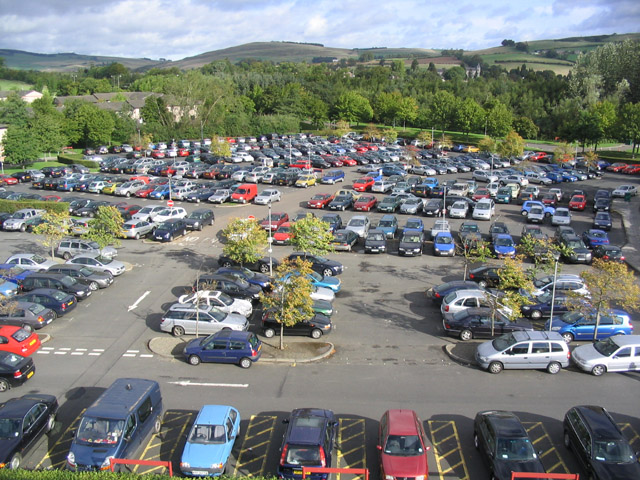 Everyone who drives in the UK is required to take out car insurance. Whilst fully comprehensive is voluntary, it is compulsory to have at least third party insurance, which covers damage to other vehicles. Insurance premiums are calculated based on a number of different variables, such that two people driving the same car may face wildly different costs.
Everyone who drives in the UK is required to take out car insurance. Whilst fully comprehensive is voluntary, it is compulsory to have at least third party insurance, which covers damage to other vehicles. Insurance premiums are calculated based on a number of different variables, such that two people driving the same car may face wildly different costs.
Although there are many insurance companies to choose from, this industry has been referred to the Competition Commission by the OFT as it was ‘worried the structure of the market was making costs and premiums unnecessarily high.’
According to Moneysupermarket, the average cost of car insurance reached a high of £554 in April 2011, but have fallen by £76 since. With tight incomes across the UK for many families, high car insurance premiums is another strain and thus this investigation will come at an apt time, even though the findings of the CC may not be reported for 2 years. The Association of British Insurers (ABI) said that the investigation would:
‘bring much-needed reforms to the market that will, in turn, result in lower car insurance premiums for consumers’.
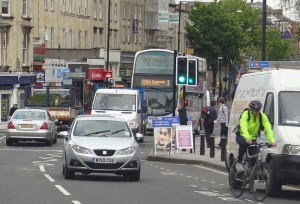 The problem seems to be that when an individual is involved in an accident and sends their car off for repairs, their insurance company doesn’t have much control over the bills they end up paying, which can be inflated by £155 each time. This therefore leads into higher costs for the insurance company, which are then passed on the driver in the form of an increased premium. Other concerns were that courtesy cars were being offered, at an estimated cost of £560 per vehicle (according to the OFT) and that drivers were using these cars for longer than necessary, once again causing costs to rise.
The problem seems to be that when an individual is involved in an accident and sends their car off for repairs, their insurance company doesn’t have much control over the bills they end up paying, which can be inflated by £155 each time. This therefore leads into higher costs for the insurance company, which are then passed on the driver in the form of an increased premium. Other concerns were that courtesy cars were being offered, at an estimated cost of £560 per vehicle (according to the OFT) and that drivers were using these cars for longer than necessary, once again causing costs to rise.
Altogether, it has been suggested that the actions of the insurance company of ‘not-at-fault’ drivers, car hire companies, repairers and brokers push up the prices for ‘at-fault’ drivers’ insurance companies. Given that any insurance company is just as likely to be the ‘at-fault’ insurance company, they all face rising costs.
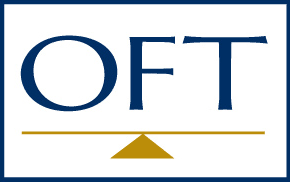 Back in May, the OFT had already decided that the car insurance market required a more detailed investigation, because of the ‘dysfunctionality’ of the market. Following a public consultation, the industry will now face an investigation by the CC. One additional area that may be of interest to the CC came to light last year, where it was found that insurance companies were claiming against themselves in a bid to drive up premiums. Although the investigation will take some time, it is still a timely review for many drivers, who have seen the cost of motoring reach record highs. The following articles consider the market for car insurance.
Back in May, the OFT had already decided that the car insurance market required a more detailed investigation, because of the ‘dysfunctionality’ of the market. Following a public consultation, the industry will now face an investigation by the CC. One additional area that may be of interest to the CC came to light last year, where it was found that insurance companies were claiming against themselves in a bid to drive up premiums. Although the investigation will take some time, it is still a timely review for many drivers, who have seen the cost of motoring reach record highs. The following articles consider the market for car insurance.
Articles
Car insurance market referred to Competition Commission BBC News (28/9/12)
No quick fix for motor insurance abuses, says watchdog Independent, Simon Read (29/9/12)
Car insurance industry faces probe The Press Association (28/9/12)
Competition Commission referral will take time to lower motor insurance premiums The Telegraph, Rosie Murray-West (28/9/12)
UK car insurance probe over-shadows Direct Line IPO Reuters, Matt Scuffham and Myles Neligan (28/9/12)
 Car insurance scrutinized over high premiums Sky News (28/9/12)
Car insurance scrutinized over high premiums Sky News (28/9/12)
Rip-off motor insurance firms face competition watchdogs probe over £225million racket Mail Online, Ray Massey (28/9/12)
Questions
- Why are car insurance firms willing to take on other people’s risks?
- What conditions must exist in a market for private companies to provide acr insurance (or insurance of any kind)?
- Why is third-party insurance compulsory, whereas people can opt for fully comprehensive insurance?
- What powers does (a) the OFT and (b) the Competition Commission have? Is it likely that this report will have any impact on car insurance premiums?
- What allegations have been made that help to explain why insurance premiums I this industry have increased?
- Is there an argument for allowing the industry itself to provide its own regulation?
- In which market structure would you place the car insurance industry?
 Two of the biggest publishing companies, Pearson of the UK and Bertelsmann of Germany are to form a joint venture by merging their Penguin and Random House imprints. Bertelsmann will have a majority stake in the venture of 53% and Pearson will have 47%.
Two of the biggest publishing companies, Pearson of the UK and Bertelsmann of Germany are to form a joint venture by merging their Penguin and Random House imprints. Bertelsmann will have a majority stake in the venture of 53% and Pearson will have 47%. Penguin and Random House merge to take on digital giants Channel 4 News, Matthew Cain (29/10/12)
Penguin and Random House merge to take on digital giants Channel 4 News, Matthew Cain (29/10/12) Penguin and Random House confident merger will be approved BBC News, Will Gompertz (29/10/12)
Penguin and Random House confident merger will be approved BBC News, Will Gompertz (29/10/12) Penguin Books and Random House to merge BBC News, Matt Cowan (29/10/12)
Penguin Books and Random House to merge BBC News, Matt Cowan (29/10/12)







